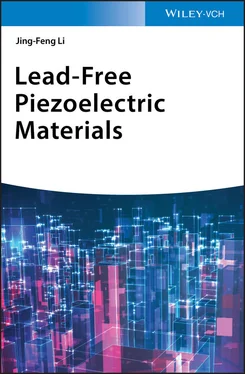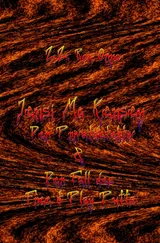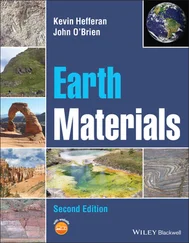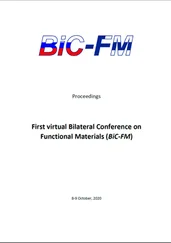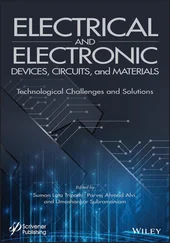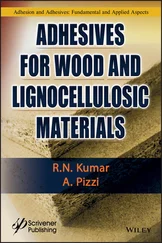Jing-Feng Li - Lead-Free Piezoelectric Materials
Здесь есть возможность читать онлайн «Jing-Feng Li - Lead-Free Piezoelectric Materials» — ознакомительный отрывок электронной книги совершенно бесплатно, а после прочтения отрывка купить полную версию. В некоторых случаях можно слушать аудио, скачать через торрент в формате fb2 и присутствует краткое содержание. Жанр: unrecognised, на английском языке. Описание произведения, (предисловие) а так же отзывы посетителей доступны на портале библиотеки ЛибКат.
- Название:Lead-Free Piezoelectric Materials
- Автор:
- Жанр:
- Год:неизвестен
- ISBN:нет данных
- Рейтинг книги:5 / 5. Голосов: 1
-
Избранное:Добавить в избранное
- Отзывы:
-
Ваша оценка:
- 100
- 1
- 2
- 3
- 4
- 5
Lead-Free Piezoelectric Materials: краткое содержание, описание и аннотация
Предлагаем к чтению аннотацию, описание, краткое содержание или предисловие (зависит от того, что написал сам автор книги «Lead-Free Piezoelectric Materials»). Если вы не нашли необходимую информацию о книге — напишите в комментариях, мы постараемся отыскать её.
Lead-Free Piezoelectric Materials
Lead-Free Piezoelectric Materials
Lead-Free Piezoelectric Materials — читать онлайн ознакомительный отрывок
Ниже представлен текст книги, разбитый по страницам. Система сохранения места последней прочитанной страницы, позволяет с удобством читать онлайн бесплатно книгу «Lead-Free Piezoelectric Materials», без необходимости каждый раз заново искать на чём Вы остановились. Поставьте закладку, и сможете в любой момент перейти на страницу, на которой закончили чтение.
Интервал:
Закладка:
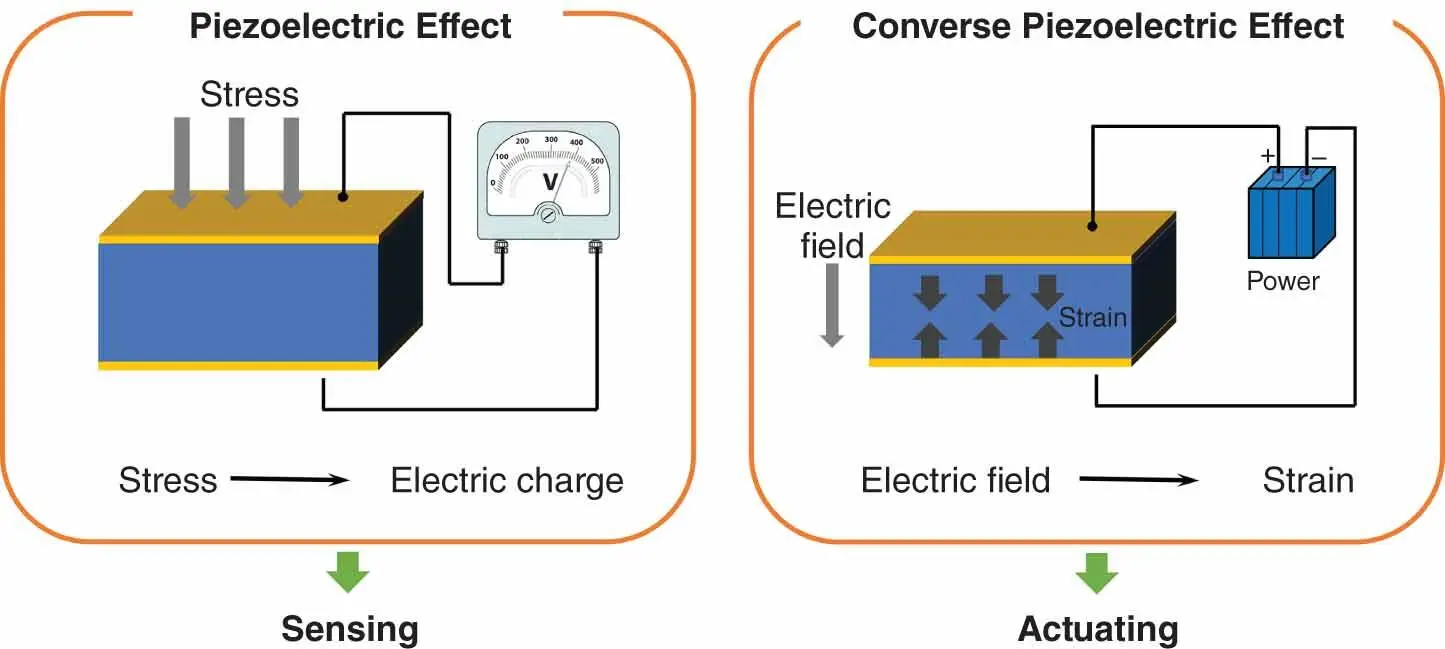
Figure 1.1 (a) The direct piezoelectric effect provides an electric charge upon application of a mechanical stress, whereas (b) the converse piezoelectric effect describes the situation where strain develops under an applied electric field.
Source: Reproduced with permission from Roedel and Li [17]. Copyright 2018, Cambridge University Press.
In a narrow sense, piezoelectricity can be understood as a linear electromechanical interaction between the mechanical and the electrical states. The constant for such a linearly proportional relation is defined as the piezoelectric coefficient d , which is a third‐rank tensor coupling the first‐rank tensor or vector (electric displacement or field) and the second‐rank tensor (stress or strain). Hence, the piezoelectric equations may be written in the following form ( i , j , k = 1, 2, 3) [22]
(1.1) 
(1.2) 
where D iis electric displacement (C/m 2), E iis electric field component (V/m), S ijis strain component, Τ ijis stress component (N/m 2), and d kijor d kij *is component of the piezoelectric charge or strain constant. It should be noted that the subscripts of piezoelectric constant are commonly expressed using the reduced Voigt matrix notation d km, where k denotes the component of electric displacement D or field E in the Cartesian reference frame ( x 1, x 2, x 3), and the index m = 1, …, 6 is used to define the mechanical stress or strain. In this case, m = 1, 2, and 3 correspond to the normal stresses along the x 1, x 2, and x 3axes, respectively, whereas m = 4, 5, and 6 stand for the shear stresses Τ 23, Τ 13, and Τ 12, respectively. Both d and d *are called the piezoelectric constant or coefficient, but they have different units, which are pC/N and pm/V (here, p stands for 10 −9), respectively. It follows from thermodynamic considerations that d km= d km *, namely, the coefficients that connect the field and strain are equal to those connecting the stress and the polarization.
In addition to the piezoelectric charge or strain constant, other forms of piezoelectric constants are also used in specialized design cases. Totally, there are four piezoelectric constants including the abovementioned piezoelectric charge or strain coefficient d , which are listed in Table 1.1with their names and definitions [22]. These piezoelectric constants are defined as partial derivatives evaluated at constant stress (subscript T), constant electrical field (subscript E), constant electrical displacement (subscript D), or constant strain (subscript S). These conditions can be regarded as “mechanically free,” “short circuit,” “open circuit,” and “mechanically clamped,” respectively.
1.3 Ferroelectric Properties and Its Contribution to Piezoelectricity
Since most high‐performance piezoelectric materials are also ferroelectric materials, it is necessary to review ferroelectric properties and their contribution to piezoelectricity [23–28]. Ferroelectricity is a character of certain materials that have a spontaneous electric polarization that can be reversed by the application of an external electric field. As illustrated in Figure 1.2, dielectrics are the big family with the core subset being ferroelectrics. Dielectric materials are basically electrical insulators, which become polarized by the peripheral application of electrical field when placed across the plates of a capacitor. Piezoelectric materials belong to the dielectric group, but a stress can create a net separation of positive and negative charges in a piezoelectric crystal that has a non‐centrosymmetric crystal structure. Pyroelectrics are those materials with the ability to generate a temporary voltage when they are heated or cooled, since the polarization magnitude in a pyroelectric crystal can be thermally changed by the temperature change. By comparison, for a piezoelectric crystal, it is the mechanical stimuli resulting in the polarization change and as a consequence, charges build up at its surfaces. Ferroelectrics are an experimental subset of pyroelectric materials. All ferroelectric materials are pyroelectrics, and all pyroelectrics are piezoelectric; however, not all piezoelectric materials are pyroelectric and not all pyroelectrics are ferroelectric. It is known that crystal symmetry governs the aforementioned categorization. All crystalline substances belong to one of the 32 crystallographic point groups. There are 20 piezoelectric point groups and 10 ferroelectric point groups.
Table 1.1 Piezoelectric constants.
| Symbol | Name | Definition |
|---|---|---|
| D | Piezoelectric charge coefficient or piezoelectric strain coefficient |  |
| G | Piezoelectric voltage coefficient (voltage output constant) |  |
| E | Piezoelectric stress coefficient |  |
| H | Piezoelectric stiffness coefficient |  |
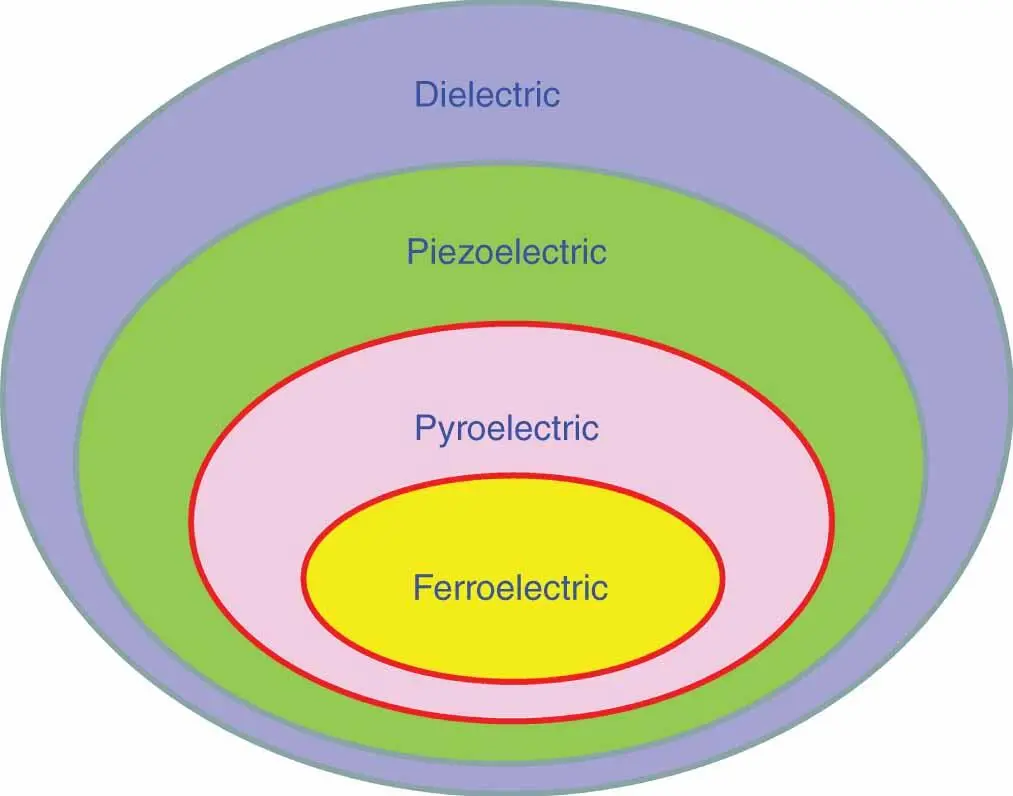
Figure 1.2 The relationship among dielectric, piezoelectric, pyroelectric, and ferroelectric materials.
The direction of electric dipoles in both piezoelectric and pyroelectric (but not ferroelectric) materials cannot be changed, whereas it can be reversed by an electric field for ferroelectric materials. Therefore, the distinguishing feature of ferroelectrics is that the spontaneous polarization can be reversed by a sufficiently high applied electric field along the opposite direction. Furthermore, the polarization is dependent not only on the current electric field but also on its history that the material has experienced, thereby yielding a hysteresis P – E (polarization–electric field) loop, as shown in Figure 1.3. Starting from point A, the polarization initially increases slowly with E‐field, but turns to a sharp rise when the applied field is sufficiently high. Then, after a long and slow stage, the polarization reaches a saturation level (saturation polarization, P s). The P sis normally estimated by intersecting the polarization axis with the saturated linear part. The polarization does not go back to the starting point after the removal of E‐field but instead results into non‐zero values, which is defined as the remnant polarization, P r. In order to reach a zero polarization state, an E‐field applied along the opposite direction is required. This E‐field is named as the coercive field, E C, which stands for the magnitude of the applied electric field to reverse the direction of ferroelectric polarization.
Читать дальшеИнтервал:
Закладка:
Похожие книги на «Lead-Free Piezoelectric Materials»
Представляем Вашему вниманию похожие книги на «Lead-Free Piezoelectric Materials» списком для выбора. Мы отобрали схожую по названию и смыслу литературу в надежде предоставить читателям больше вариантов отыскать новые, интересные, ещё непрочитанные произведения.
Обсуждение, отзывы о книге «Lead-Free Piezoelectric Materials» и просто собственные мнения читателей. Оставьте ваши комментарии, напишите, что Вы думаете о произведении, его смысле или главных героях. Укажите что конкретно понравилось, а что нет, и почему Вы так считаете.
